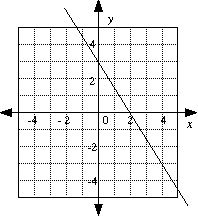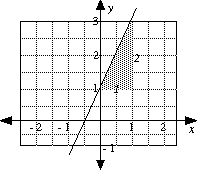 Linear functions have graphs which are straight lines.
Linear functions have graphs which are straight lines.
The general equation of a linear function is ax + by + c = 0.
The exponents of both the x term and the y term are 1.
Another often used form of linear functions is y = mx + c.
Gradient
The gradient of a straight line is a measure of its slope.
The gradient, m is defined as:
Sketching Straight Line Graphs
There are several ways to sketch the graphs of linear functions.
Intercept method.
Find the two intercepts by putting x = 0 into the equation and finding the corresponding y value.
Then put y = 0 into the equation and find the corresponding x value.
This gives the values of x and y where the graph cuts the axes.
e.g. 3x + 2y = 6
|
Put x = 0
3 x 0 + 2y = 6
2y = 6
y = 3
The y-intercept is 3.
Put y = 0
3 x + 2 x 0 = 6
3x = 6
x = 2
The x-intercept is 2.
|
 |
Gradient / Intercept method.
If the equation is written in the form y = mx + c, where y is the subject of the equation, then:
m, the coefficient of x, is the gradient of the line,
and c, the constant term, is the y-intercept.
e.g. y = 2x + 1
|
By inspection of the above equation:
Gradient is 2
y-intercept is 1
|
 |
Types of Lines
|
Type of lines
|
Equation
|
Examples
|
| Vertical lines |
These have equations of the type x = a |
x = 3 or x = -2 |
| Horizontal lines |
These have equations of the type y = b |
y = 6 or y = -3 |
| Lines through origin |
These have equations of the type y = mx |
y = 3x or y = -2x |